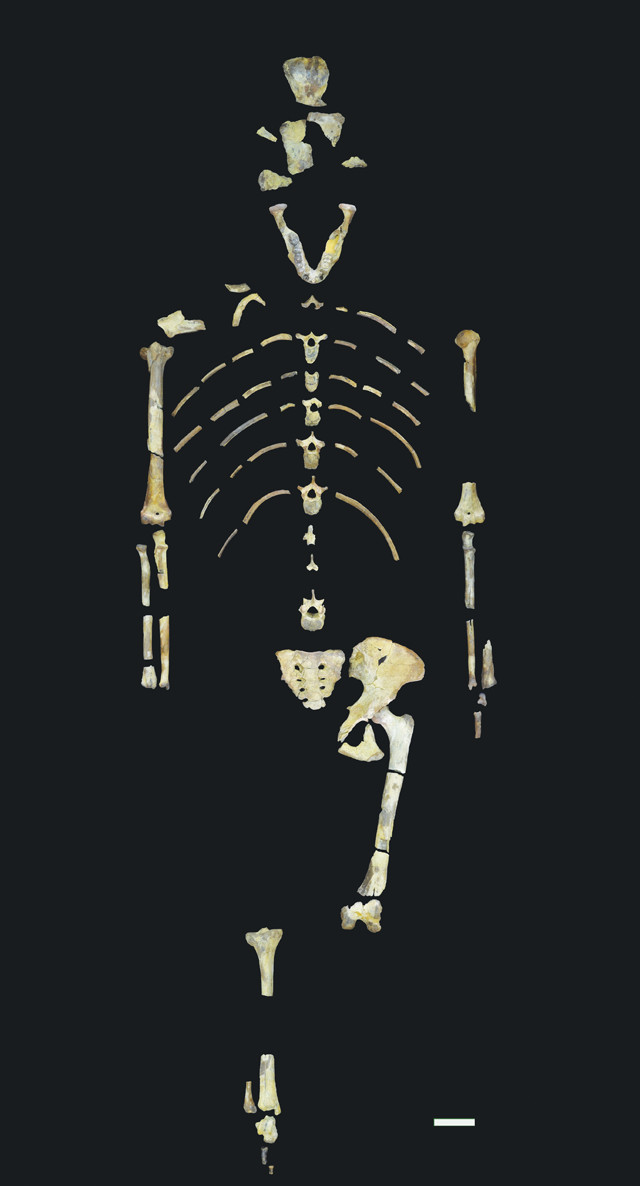
by Lucas Joel Thursday, April 6, 2017

A new study focused on Lucy's upper arm bones, which held clues revealing an arboreal, climbing lifestyle for the hominin. Credit: John Kappelman/University of Texas, Austin.
Lucy, the 3.2-million-year-old human ancestor discovered in Ethiopia in 1974, is one of the most complete early hominin skeletons ever found. Still, despite the skeleton’s completeness, debate continues about how Lucy got around: Did she spend most of her time walking on the ground or climbing in trees? In a new study, scientists studying Lucy’s upper limb bones have found that she likely spent more time in trees — and was a more capable climber — than later hominin species like Homo erectus and Homo sapiens.
“We were able to undertake this study thanks to the relative completeness of Lucy’s skeleton,” said Christopher Ruff, a paleoanthropologist at Johns Hopkins University School of Medicine and lead author of the new PLOS ONE study, in a statement. “Our analysis required well-preserved upper and lower limb bones from the same individual, something very rare in the fossil record” of hominins, he said.
The team compared CT scans of Lucy’s arm bones to scans of both human and chimpanzee bones, and found that “the upper limbs of chimpanzees are relatively more heavily built because they use their arms for climbing, with the reverse seen in humans, who spend more time walking and have more heavily built lower limbs,” Ruff said. Lucy’s arm bones are “intermediate between those of modern humans and chimpanzees,” the authors wrote in the study, providing “evidence for substantially more arboreal, i.e., climbing behavior, than either modern humans or Homo erectus.”
© 2008-2021. All rights reserved. Any copying, redistribution or retransmission of any of the contents of this service without the expressed written permission of the American Geosciences Institute is expressly prohibited. Click here for all copyright requests.